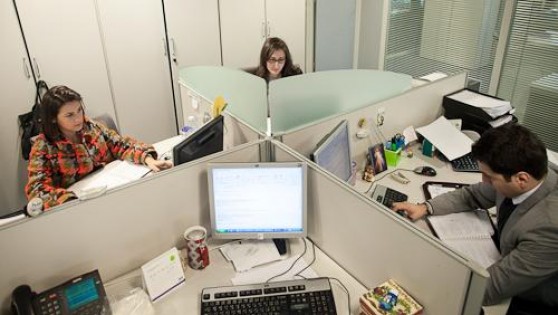Towering above the country’s gross national product at some three times the size, Lebanon’s banks deposits (about $127 billion in 2012) make up much of their balance sheets’ liabilities.
The loan part has been solid and the policy on lending in Lebanese banks is extremely conservative. For example, a minimum of 25 percent down payment on mortgage loans is a norm. This policy has been proven by crisis; Lebanese banks withstood the 2008 financial debacle with hardly any repercussions. In addition, Lebanese banks’ loan to deposit ratio stands at around 35 percent compared, for example, to 80 percent for banks in the Gulf Cooperation Council.
The other major component of banks’ assets is significant holdings of government debt in the form of Lebanese treasury bills and Eurobonds. As of December 2012, 42 percent of the Lebanese banks’ assets were invested in papers issued by the central bank or the state, according to Moody’s.
While commercial banks have been financing the public debt for a long time and achieved good profits, sovereign Eurobonds and T-bills carry an inherent risk of default on government debt. We do not believe that this is imminent or even likely in the near future, but we nevertheless need to highlight tools that help us measure the government’s ability to finance its debt. Commercial banks’ long-standing appetite for public debt may change if the banking sector does not achieve real growth in deposits and assets. Creating a break in this dynamic ultimately goes back full circle to negatively impact banks.
After Lebanon’s debt to gross domestic product (GDP) ratio peaked at about 175 percent in 2007, robust growth allowed this ratio to fall back down to 133 percent at the end of 2010. In 2013 we see that lower GDP growth of recent years has put upward pressure on this ratio, spreading fears that we could once again be headed to unsustainable debt levels. Having said this, it is important to mention that the Lebanese economy has been able to, in a span of less than 10 years, double its aggregate demand, as GDP stood at about $20 billion in 2004 and is currently above $40 billion.
Should the economy come even close to this performance over the next 10 years, we would be out of the woods; we have operated in recent years with no new legislated budget, implying that the government spends only what it earns. Although the short-term economic growth outlook for Lebanon is not so bright, we see it as entirely possible to return to a positive dynamic on the debt to GDP ratio.
This will require a GDP growth rate of 6 percent or more, which is realistic for Lebanon as an emerging economy. Political stability and security will be key for returning to growth rates of 6 percent or even 8 percent, which we regard as being in our reach as the country has proven between 2007 and 2009. We expect that domestic political stability will be recovered as a solution to the Syrian situation is found in the coming few years.
Too many cooks?
Another key issue is that Lebanon is ‘overbanked’. This is often spoken of in negative terms but we see potential in this fact.
As the banking sector’s high ratio of deposits to GDP (300 percent at end 2012) has necessitated geographic expansions of Lebanese lenders into new markets for many years, we see the strength in human resources and experience that banks have gained in the overbanked domestic market as an aid to international expansion.
In this context, we note that the “Arab Spring” resulted in a painful experience for Lebanese banks that took their first steps abroad in the period up to 2011. Several top tier banks, which had rapidly expanded in countries such as Syria and Egypt, were the most affected. It is our opinion that the damage was significant but was downplayed as that would have caused further injury. This was most likely achieved by allowing banks to amortize losses incurred over a lengthy period of time. We believe that the combination of more proper exposures and a new expansionary policy will work strongly in favor of Lebanese banks and inevitably bear fruit for them.
Additionally, although being overbanked implies that over saturation can be found in parts of the market, Lebanon’s ratio of 31.5 commercial bank branches per 100,000 adults in the 2008-12 period according to the World Bank is 22.5 points below Switzerland’s banking density.
In conclusion, we reiterate and emphasize that, while numerous facts and variables need to be accounted for when trying to assess the future of the Lebanese banking system, it is the ability (or lack thereof) of the economy to resume a robust growth that will prove crucial to the continued wellbeing of banks in Lebanon.
Ziad Abou Jamra is the deputy general manager of Fidus







![Thursday[12][24]](https://www.executive-magazine.com/wp-content/uploads/2014/01/Thursday1224.jpg)
![debt[1]](https://www.executive-magazine.com/wp-content/uploads/2014/01/debt1.jpg)
![Wednesday[35]](https://www.executive-magazine.com/wp-content/uploads/2014/01/Wednesday35.jpg)

